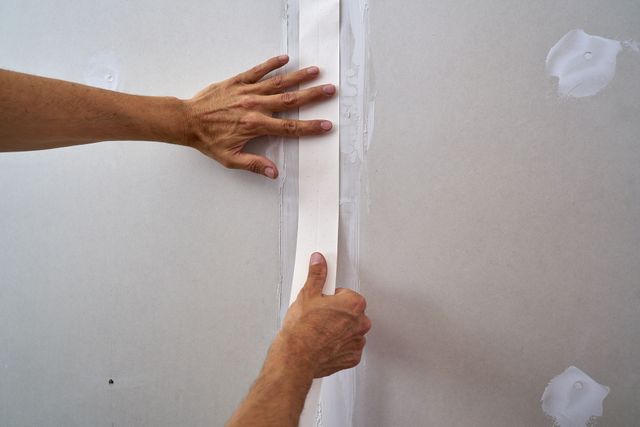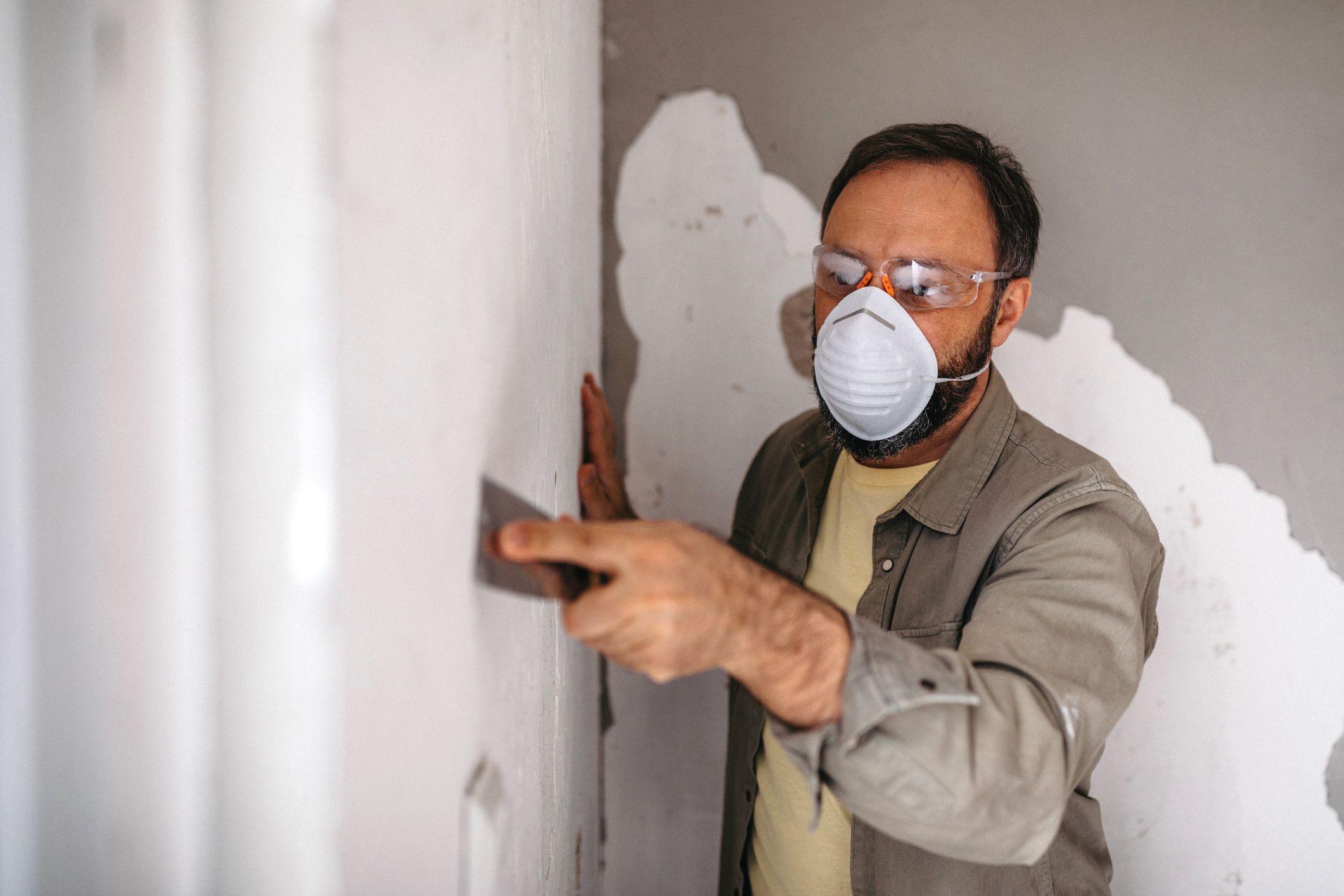A Comprehensive Guide to Mastering Drywall Repair and Installation
This overview offers a complete expedition of drywall repair work and installation, accommodating both novices and experienced experts. It lays out vital devices, techniques for patching and hanging sheets, and the important completing procedures. drywall contractor. By comprehending common pitfalls, people can attain sleek outcomes. Mastering these skills not just enhances one's home yet likewise constructs confidence in do it yourself undertakings. What fundamental ideas will ensure an effective task throughout?
Necessary Devices for Drywall Repair and Installment
When beginning on drywall fixing and installment, a few essential tools can substantially enhance the effectiveness and high quality of the job. A drywall blade, typically offered in various dimensions, is crucial for applying joint compound and smoothing seams. A taping blade is also essential for feathering edges and making certain a smooth finish. In addition, a drywall saw or energy blade enables accurate cutting of drywall sheets to fit any type of room.

Step-by-Step Guide to Patching Holes
Patching holes in drywall is an uncomplicated procedure that can restore the wall's appearance and stability. To begin, the area around the opening should be cleansed and any kind of loosened particles got rid of. For tiny openings, a simple spackle or joint compound can be applied with a putty knife. Larger holes might need a spot; an item of drywall can be cut to fit the opening, safeguarded with adhesive or screws, and after that taped around the edges. As soon as the spot remains in area, joint compound is applied over the spot and feathered out to blend with the bordering wall. After the compound dries, sanding is necessary to attain a smooth coating. Lastly, the fixed location can be keyed and painted to match the remainder of the wall. This technique guarantees a seamless repair work, improving the overall appearance of the drywall and preserving its architectural honesty.
Techniques for Hanging Drywall Sheets
After successfully fixing openings in drywall, the following step involves hanging new drywall sheets to create a smooth surface area. To achieve this, one must start by measuring the wall room properly and cutting the drywall sheets to fit. It is crucial to hang the sheets horizontally for much better architectural integrity, beginning from the top and working downwards.
Using a drywall lift can simplify the procedure, particularly for ceiling installments. Once placed, protecting the sheets with drywall screws at periods of about 12 inches along the edges and 16 inches in the field is vital. This guarantees a strong hold and minimizes the risk of drooping. For edges, the sheets should be reduced to fit well, permitting cleaner joints. Lastly, it is advisable to startle the joints between sheets to reinforce the total structure, producing a much more sturdy surface all set for the next stage in the drywall setup process.
Finishing Touches: Taping and Mudding
Finishing the drywall installation includes the vital actions of mudding and taping, which guarantee a refined and smooth finish. Taping requires the application of joint tape over the joints between drywall sheets. drywall contractors. This go now tape can be either paper or fiberglass mesh, with each type offering unique advantages. After taping, the next step is mudding, where joint substance, or "mud," is put on cover the tape and fill any kind of imperfections
Utilizing a drywall blade, the substance must be spread equally, making sure a feathered side to lessen visible adjustments. Multiple layers are frequently required, with fining sand in between each layer to achieve a seamless surface area. Careful attention throughout this process is essential, as it greatly influences the final look of the wall. With the appropriate technique and persistence, completion result will be a perfect foundation ready for painting or ending up touches.
Common Errors to Prevent in Drywall Projects
:max_bytes(150000):strip_icc()/SPR-solutions-to-common-drywall-problems-p2-4120949-not-on-stud_53719-051c5226ba8f478086c3994975acf8c9.jpg)
An additional typical error is not allowing adequate drying out time between layers, which can pop over to these guys catch dampness and endanger the surface. Additionally, ignoring to feather the sides appropriately can develop visible lines and flaws. Missing sanding or utilizing incorrect methods may leave rough spots. By understanding these mistakes, individuals can significantly improve the quality of their drywall projects and attain a professional-looking surface.
Frequently Asked Inquiries
Can I Fix Drywall Without Specialist Assist?
Yes, one can repair drywall without professional help. With the right tools, materials, and guidance, individuals can efficiently take care of minor repair work. However, significant damage might need professional expertise for perfect results and toughness.
Just How Long Does Drywall Substance Take to Dry?
Drywall substance usually takes in between 24 to 48 hours to dry totally, depending upon aspects such as moisture and temperature level. Thinner layers might dry out much faster, while thicker applications need even more time for optimal outcomes.
What's the very best Kind Of Paint for Drywall?
The most effective kind of paint for drywall is usually a water-based latex paint. It provides exceptional coverage, durability, and convenience of application, making it excellent for indoor wall surfaces while permitting very easy cleaning with soap and water.

Just how Do I Prevent Mold And Mildew on Drywall?
To stop mold and mildew on drywall, warranty proper air flow, control moisture degrees, use mold-resistant products, and without delay attend to any kind of leakages. Regular assessments and prompt removal of water damage are likewise crucial for long-lasting prevention.
Is Drywall Recyclable After Removal?
Drywall is recyclable after removal, provided it is devoid of pollutants like mold and mildew, paint, or other harmful products. Reusing centers can process it right into brand-new items, advertising sustainability and lowering garbage dump waste in construction.
When starting on drywall repair and installation, a few necessary devices can significantly enhance the performance and top quality of the work. After successfully fixing holes in drywall, the following step involves hanging new drywall sheets to develop a seamless surface. Completing the drywall installation entails the crucial steps of taping and mudding, which ensure a refined and smooth coating. Achieving a refined surface in drywall projects can be tough, and numerous usual mistakes can undermine the high quality of the job. Yes, one can repair drywall without expert assistance.